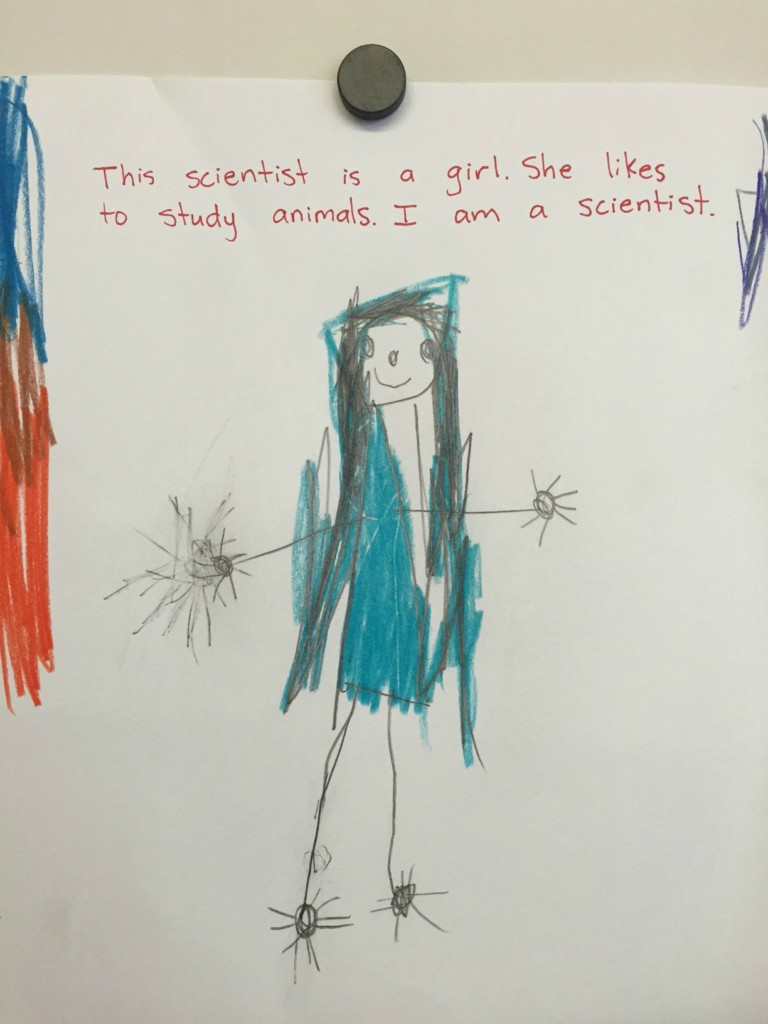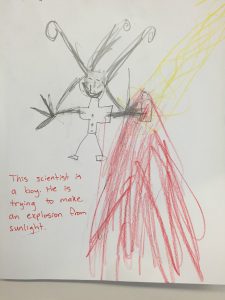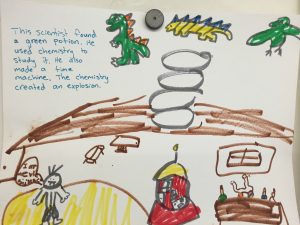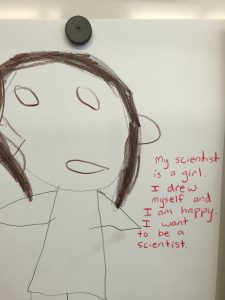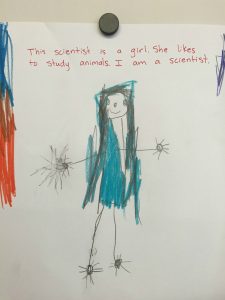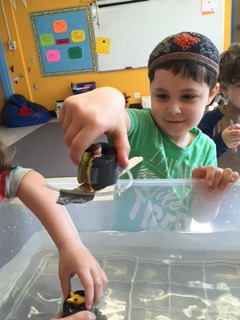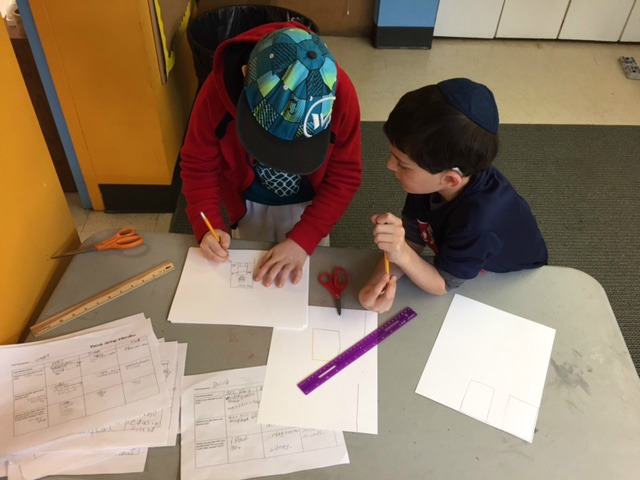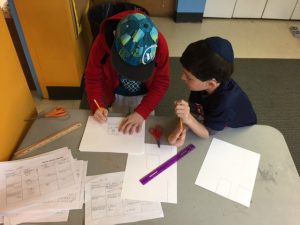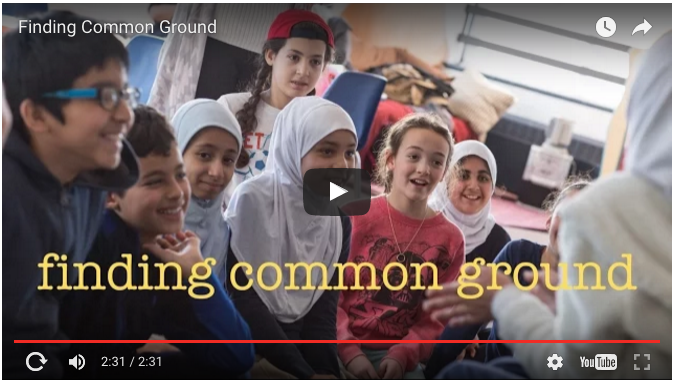This is a taste of the Morning Message that Thirdgradian’s respond to every day. This way they start their day building community, expressing themselves, and thinking about sweets!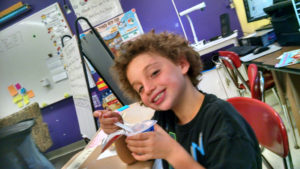
Morning Message is usually followed by snack, then math. In math we have been exploring place value, and building towers with base ten blocks (but not before counting each block!)
After that, Thirdgradians have ELA, where they are being read books about civilization building (Roxaboxen by Barbara Cooney, Weslandia by Paul Fleischman) and doing the impossible (Emmanuel’s Dream by Laurie Thompson, and Rain School by James Rumford). They have been reading, writing, and discussing at a high level. They have especially enjoyed the spelling activities. They were able to draw comics, write stories, or make mini dictionaries as long as they used ALL their target spelling words. 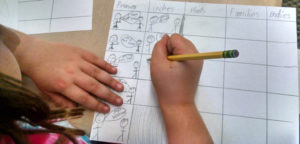
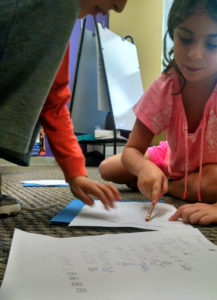
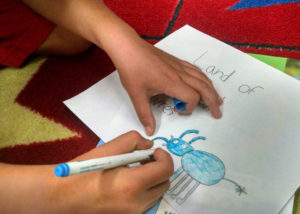
Thirdgradians have also spent a lot of time brainstorming about what our civilization should look like. We have come together and agreed on our civilization’s name, style, and core values. Every Friday, kids get a full period of Project Time to take part in building their classroom. Now that our first priority, The Thirdgradian Armory of Mythical Weapons, is completed, there are a slew of projects that need our attention.
First among these upcoming projects is assisting our classroom bloggers in taking ownership of this space. Tomorrow I will upload the children’s dispatch, and from here on this space will feature their thoughts, their pictures, and their perspective. I will continue to add additional context and photos as needed. Stay tuned!
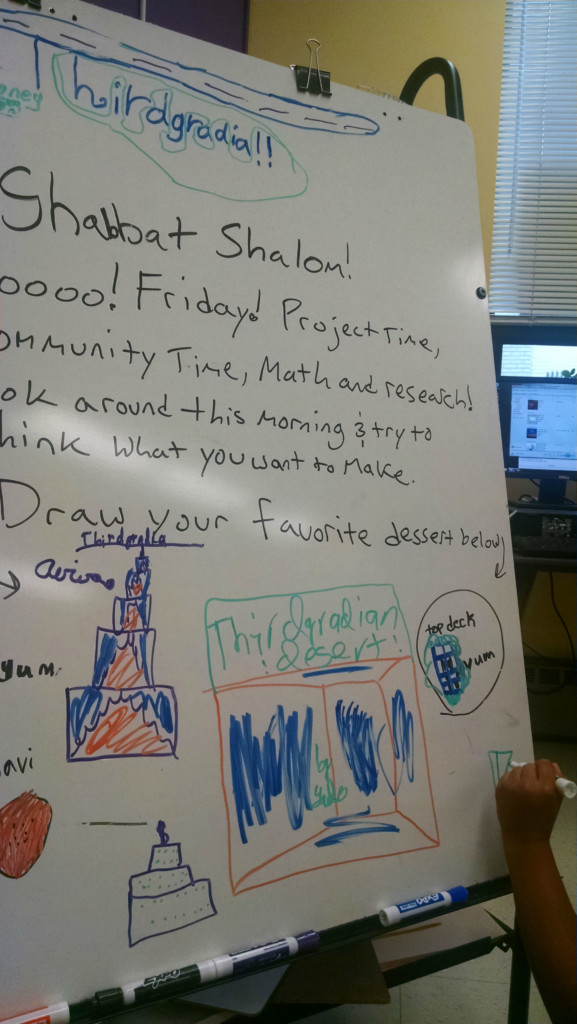
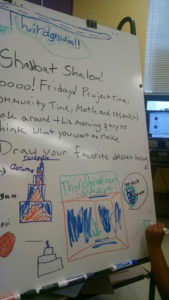
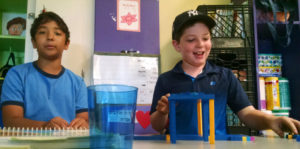

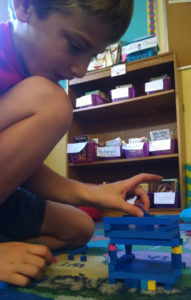
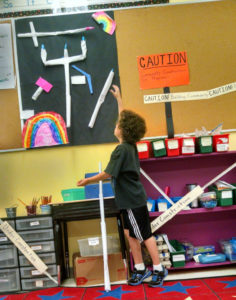
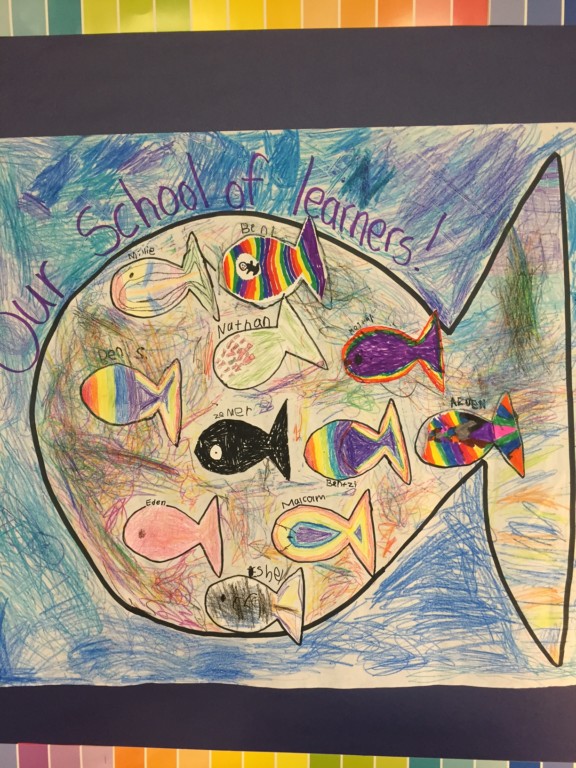
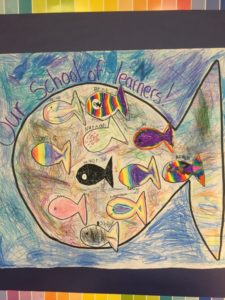 a class poster. Each student created a unique fish, and then we made one picture together. We reflected on community and how we could collaborate. The conversation started when a child said, “I will help others with their work.” One child added, “I will be a good friend.” Another noted, “I will be kind.” Others said, “We will help by sharing.” We are learning about friendship and common interests, and growing as a first grade community.
a class poster. Each student created a unique fish, and then we made one picture together. We reflected on community and how we could collaborate. The conversation started when a child said, “I will help others with their work.” One child added, “I will be a good friend.” Another noted, “I will be kind.” Others said, “We will help by sharing.” We are learning about friendship and common interests, and growing as a first grade community.
